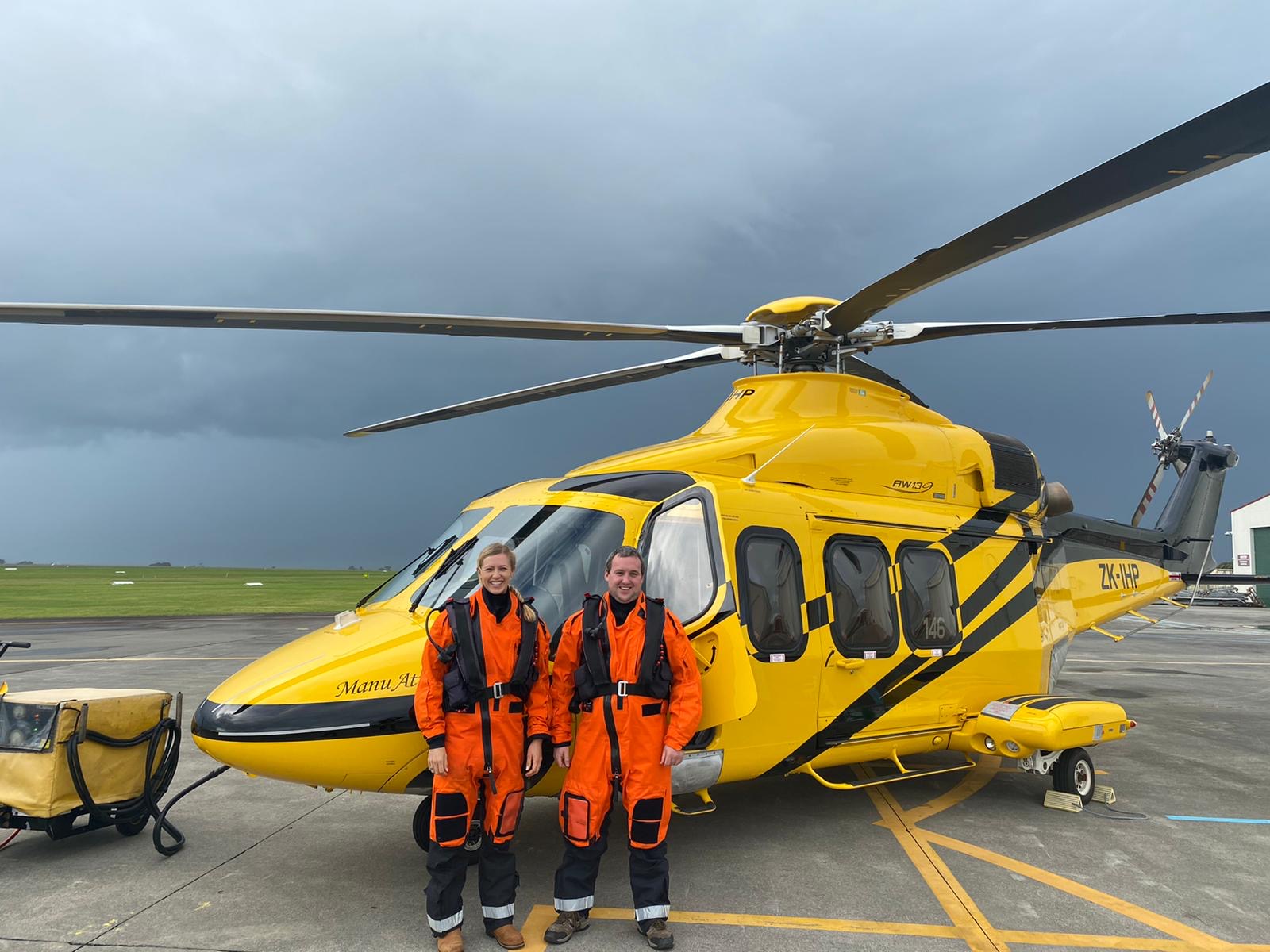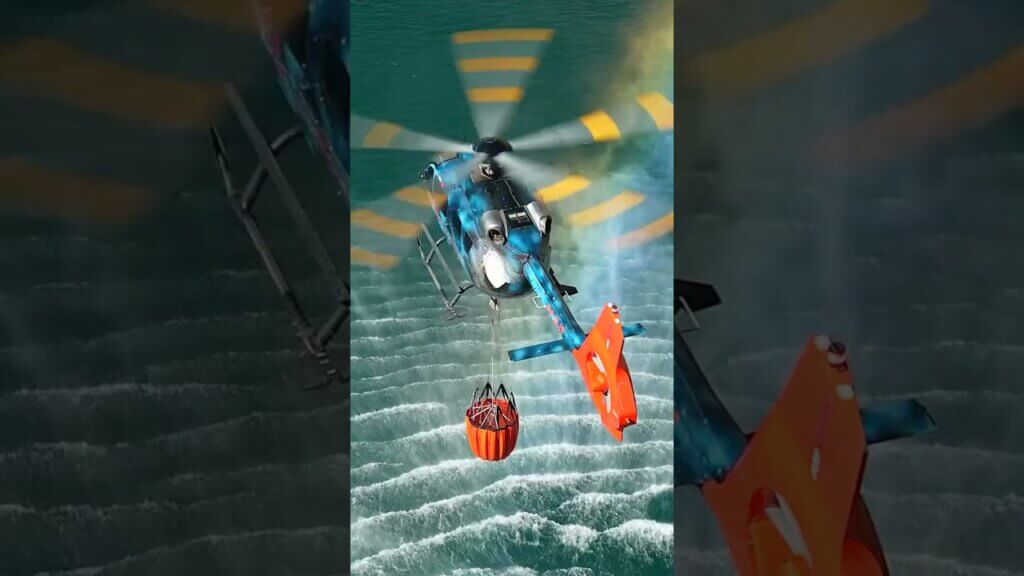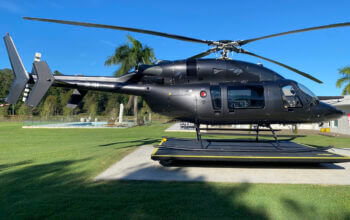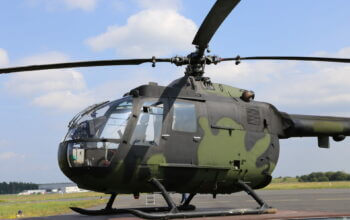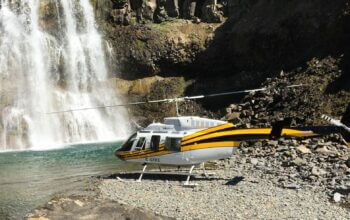A burning desire to join the air cadets as a kid was Alicia ‘Liss’ Earle’s first clue that her career might one day reach the skies. It was a similar story for Cory Sutton, who traces his fascination with planes and helicopters back to a childhood spent growing up in Balclutha, Otago.

With the cost of training as a commercial pilot sitting around $90,000, the time and expense of carving out a career as a helicopter pilot puts the dream out reach for most people. For Earle and Sutton, that dream came true earlier this year when they were picked from a group of eight hopefuls to join a fully paid helicopter co-pilot training program under the wing of New Zealand’s largest helicopter operator, PHI International.
But their journey to reach this point has been far from easy, with both dedicating every spare cent and second to skilling up while working full time jobs in other professions to follow their passion. Originally from the U.K., Earle worked as a civil engineer for five years in Perth before she booked a trial flight in a helicopter and found herself immediately hooked.
“I absolutely loved it,” she recalled. “I remember talking to the instructors who said I had a great career to fall back on, so I didn’t have too much to lose.”
Within six months, Earle had completed her commercial helicopter licence and transitioned to flying full time, taking up a role with a tourism and charter company in Western Australia. She moved to New Zealand in 2015 where she built up experience flying scenic tours over the South Island Fox Glaciers and, during the off-peak seasons, studied qualifications in instrument rating — a requirement for pilots who wish to fly without restrictions such as at night.
Sutton was working as a lineman in Balclutha when he took his first step into the world of aviation. He earned his private pilot licence and flew as a hobby before sealing his decision to pursue a career as a helicopter pilot in earnest with a move to Wanaka. Over two years, he earned his commercial pilot licence and, like Earle, studied instrument rating theory. He also gained a diploma in aviation for rotary-wing aircraft.
While Sutton is unsure where his hunger for flying stems from, he knew from the moment he took his first flight that it was the career for him.
“No one in my family flew so I’m not sure where it came from, but my first flight was such a cool feeling, I knew I was going to continue and become a pilot,” he said. “In Wanaka, I adapted some of my training to include a night rating and instrument flight hours, which aren’t a requirement but along with some previous flying experience and instrument rating theory exams, I hoped would pay off in a few years.”
And pay off it did. When Sutton heard PHI International was looking to train up people with low flying hours, he applied and was shortlisted alongside seven others. Earle and Sutton said the selection process was tough, including psychometric testing, a panel interview and a pilot aptitude test in a simulator.
PHI International chief pilot Russell Pirihi, who helped narrow down the candidates, said the company wanted people who performed well under pressure and had shown commitment to pursuing a career in aviation independently.
“We wanted candidates who are passionate about aviation to fit with the culture in our business,” Pirihi said. “Both Liss and Cory had done so much more than just the run of the mill basics to develop their career on their own.
“They’d both been working towards their instrument rating which stuck out as unusual for candidates at that level. It shows appetite and that they were pretty deliberate in where they wanted to go with their flying careers.”
The scheme will take Earle and Sutton all the way through their instrument rating training before they begin working with the company to fly helicopters offshore from its New Plymouth base.
The candidates will undertake approximately 100 hours of additional flight training between them and when completed, they will be fully qualified co-pilots. The program was originally scheduled to run for 12 weeks from March but had to be reworked when the country went into lockdown. Instead, Sutton and Earle focused on learning the theory online during Level 4 and since Level 2 have been working alongside PHI International’s New Plymouth team getting plenty of hands on experience working in an operating base.
PHI International director of flight operations, Peter Doole, said the program is an excellent opportunity for cadets with low flying hours to gain experience in an instrument flight rules (IFR) aircraft with an industry-leading company that offers extensive career opportunities.
“We fly helicopters in some of the most demanding conditions including ferrying workers to offshore oil and gas exploration platforms and back home safely,” said Doole.
“It is a highly skilled job that requires intensive training and operating at the highest levels of safety. We’re delighted to offer two young fresh faces such a strong start in their aviation career and we’re really excited to launch an initiative that will contribute to the growing demand for professional helicopter pilots in the industry.
“The co-pilot program is one of a number of initiatives that the business will be looking at to bring more diversity to the industry.”





